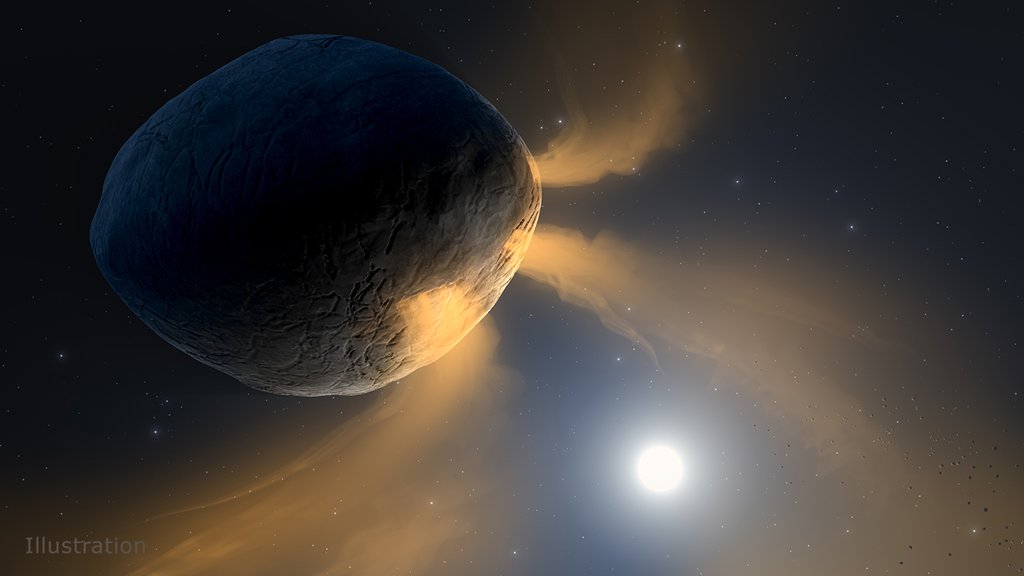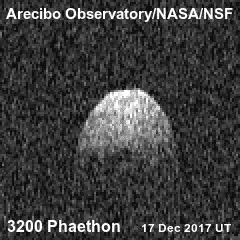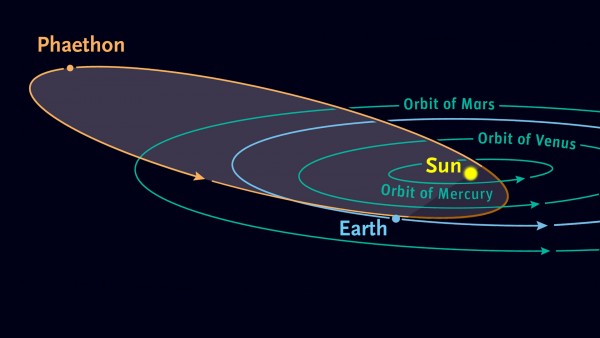The attention of NASA has been drawn to a gigantic flying object expected in December, but it is not Santa Claus’ sleigh. Instead, an asteroid 3200 Phaethon named is expected to approach Earth near enough to be classed as possibly dangerous” by the Minor Planet Center of the International Astronomical Union.
According to NASA, the asteroid has a diameter of nearly 3 miles, making it the third-largest “possibly dangerous” asteroid to pass past the planet. On Dec. 16, NASA anticipates Phaethon to be the closest to Earth, at a distance of more than 6.4 million miles. That’s over 27 times the normal distance between Earth and the moon of 238,855 miles.
According to NASA, it will be the asteroid’s closest approach to Earth since Dec. 16, 1974, when it was a little over 5 million miles away. However, humanity was not aware of its presence until much later; the asteroid was found in the year 1983.
It isn’t predicted to come near to Earth again until 2093 when it will pass almost 1.8 million miles away. While the designation of possibly dangerous” may seem scary, CBS News space specialist Bill Harwood said there’s no need to be concerned about the asteroid colliding with Earth.
3200 Phaethon is a strange comet-like object.
Comets are the primary source of meteors in yearly showers. The source of December’s Geminid meteors, though, is a weird mix of an asteroid and a comet known as 3200 Phaethon. This “rock-comet” isn’t as frigid as a comet would be.
However, like comets do, it is known to brighten as it approaches the sun. It also has a tail. It also gives rise to the Geminid meteor shower. As a result, experts are baffled about asteroid 3200 Phaethon. How is it possible for a stony asteroid to leave debris that causes a meteor shower? What is the origin of its tail?
NASA’s Jet Propulsion Laboratories in Pasadena, California, released a new theory on August 16, 2021, that might explain 3200 Phaethon’s comet-like behavior. It’s possible that sodium fizzing off the asteroid’s surface is part of the solution. According to their statement, this asteroid:
3200 Phaethon’s puzzling history
On October 11, 1983, 3200 Phaethon was the first asteroid found by a spacecraft. While looking for moving objects in Infrared Astronomical Satellite (IRAS) data, astronomers Simon F. Green and John K. Davies spotted it.
It was verified optically by Charles T. Kowal, who described it as asteroid-like in appearance. The object was given the label 1983 TB as a preliminary designation.
Astronomers assigned it an asteroid number and name two years later, in 1985, adopting the asteroid naming convention: 3200 Phaethon.
Prior to 3200 Phaethon, all known meteor showers were attributed to comets rather than asteroids. As a result, 3200 Phaethon caught them off guard right away, because, despite its appearance as an asteroid, it seemed to be the source of the annual Geminid meteor shower. Read more about Geminid meteor shower tonight 2021.
3200 Phaethon has been dubbed a comet-asteroid hybrid or an asteroid that acts like a comet, by astronomers. Later, the name “rock-comet was coined.
Phaethon 3200 Close to The sun
Astroid 3200 Phaethon is being roasted by the sun, as shown by an artist. The asteroid’s surface might become so heated that the sodium inside it vaporizes and escapes into space, brightening it like a comet. Small particles of stony debris may also be dislodged. The asteroid 3200 Phaethon, while being an asteroid, exhibits comet-like characteristics as it approaches the sun. Experts have described why Phaethon’s behavior is strange in recent research.
When Phaethon was originally identified, it was already exhibiting comet-like behavior. When Phaethon comes closest to the sun, the activity normally peaks when it passes through the hottest parts of its orbit. Despite the fact that Phaethon’s tail may be seen as that of any other asteroid, it should have been long gone owing to age.
Asteroid 3200 is a small asteroid that orbits the sun. The name Phaethon was inspired by the son of the Greek sun-god Helios. On one occasion, Phaethon attempted to steer his father’s sun-bearing chariot, which caused considerable damage. The average asteroid size for Phaethon is 6 kilometers. Any asteroid that gets closest to the sun is given its name.
An asteroid that might be dangerous
The asteroid 3200 Phaethon has been designated as a potentially dangerous asteroid. However, this does not imply that it poses a hazard to Earth. It only has two meanings. To begin with, 3200 Phaethon is a large creature.
According to the most recent estimations (2021), it is 3.6 miles (5.8 kilometers) broad. If it collides with Earth, it will inflict considerable regional devastation. Second, it is known to make near passes to Earth on a regular basis. However, astronomers believe that this asteroid will not collide with the Earth in the near future.
3200 Phaethon was closer to Earth in 2017 than it will be again until 2093. It was around 26 times the moon’s distance away at its closest in 2017. In 2017, amateur and professional astronomers alike kept a close eye on 3200 Phaethon. The film below, for example, was created from images acquired in 2017 by Northolt Branch Observatories in London, England.
Conclusion
A three-mile-wide asteroid dubbed 3200 Phaethon will approach within 6.4 million miles of Earth on Dec. 16, according to NASA.While 3200 Phaethon’s closeness to Earth has earned it the designation of a possibly dangerous asteroid by the International Astronomical Union, astronomers believe there’s no need to prepare for the end of the world. While it would be this sort of object that would trigger a catastrophic collision, should there be one, according to Michael Mendillo, an astronomy professor at Boston University, such a collision is exceedingly unlikely.


